SLEEP CENTER STUDY IN PROGRESS
Area hospitals treat sleep disorders, with an eye to PATIENTS’ HEALTH













NORTH DA KO TA ST YLE



Area hospitals treat sleep disorders, with an eye to PATIENTS’ HEALTH















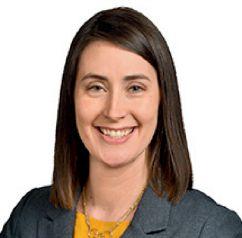
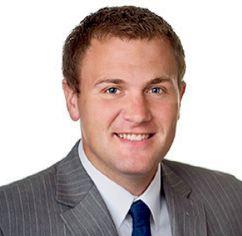
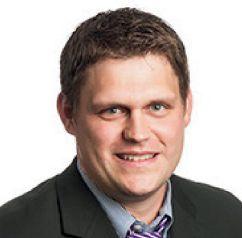

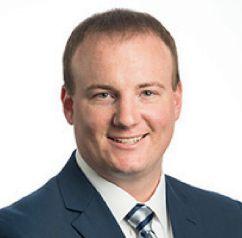

We’rea team of collaboratorsand innovatorsatEide Bailly,and ourpeople andcultureare theheart of ourfirm.Weareproud to introduceour newest partners who live ourculture, inspire ourpeople andshowexceptional leadership.
We’rea team of collaboratorsand innovatorsatEide Bailly,and ourpeople andcultureare theheart of ourfirm.Weareproud to introduceour newest partners who live ourculture, inspire ourpeople andshowexceptional leadership
What inspires you, inspires us.
What inspires you, inspires us.
ei debaill y. co m
ei debaill y. co m
JonAult,Technology Consulting Far go,ND BrentRoeder,Tax Far go,ND DC Lucas,Technology Consulting Far go,ND Ryan Beste,Audit Far go,ND Cory VanM aanen,Audit Siou xF alls,SD Stacey Nelson,Audit Sioux Falls,SD JonAult,Technology Consulting Far go,ND BrentRoeder,Tax Far go,ND DC Lucas,Technology Consulting Far go,ND Ryan Beste,Audit Far go,ND Cory VanM aanen,Audit Siou xF alls,SD Stacey Nelson,Audit Sioux Falls,SDEvolved.
Perfectlydesignedtothriveinitsenvironment. Adaptableenoughtoevolvewiththetimes. Smartsolutions,connectedcommunities.It'ssecondnatureatKLJ.
KLJENG.COM

IN THIS PHOTO FROM THE SLEEP CENTER AT CHI ST. ALEXIUS HEALTH IN BISMARCK. IMAGE: CHI ST. ALEXIUS HEALTH


CORNERSTONE BANK’S LATEST EXPANSION PUTS IT AT WHAT’S LIKELY TO BE ONE OF THE BUSIEST INTERSECTIONS IN SOUTH DAKOTA

THANKS IN PART TO THEIR MANAGEMENT CLASS, A BLACK HILLS STATE UNIVERSITY STUDENT AND A RECENT GRAD ARE BREWING AND SELLING KOMBUCHA
ON THE COVER: SLEEP CENTER STUDY IN PROGRESS Shhhhh
AFTER CENTURIES OF TAKING SLEEP FOR GRANTED, HEALTH PROFESSIONALS HAVE ‘WOKEN UP’ TO SLEEP’S VITAL ROLE IN HEALTH – AND SLEEP CENTERS ARE THE RESULT. PAGE 20.
Planning

How to minimizetaxes, avoid conflicts,and usebusiness entitiesaspart ofa farm estate planas well as otheroptions.





land.


Tax DeferredExchanges



Following the 1031 exchangeguidelines, Patrick will teach theimportanceof how to use1031 exchanges to defertaxes within realestate andland



How to Structure Legal Entities
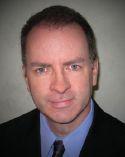
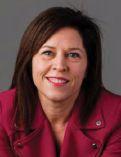




Withmany estate planning questions, Stevewillprovide guidance and answersthat willhelpprovide reliefwith your retirementconcerns.
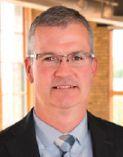



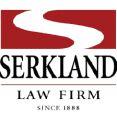

Strategies to Protectthe Family Farm ina Changing World
With extensive experience in realestate planningand valuable understanding ofland, John&Jessicawilldiscuss theimportance ofimplementingstrategies to protectthefarm’s wealthasrisksincrease.




As you’ll see when you read this issue’s “HR secrets of the 50 Best,” one trait comes up a number of times: employee ownership.
Donald Trump as well as Bernie Sanders, take note. Because as Paul Halverson, a Minneapolis-based financial advisor, told Forbes magazine, Employee Stock Ownership Plans are “the redistribution of wealth done the right way.”
Unique among corporate structures, ESOPs both reduce inequality and incent workers to behave in robust capitalistic ways.
That’s because “we are all employeeowners who literally have a vested interest in the success of the organization,” as Nichole Dyer of Ulteig puts it in our “HR secrets” story. So, employees work with entrepreneurial zeal, always watching for ways to boost the company’s – and their own – success.
That’s the theory, at least. Does it match reality?
Yes, reports a 2016 analysis of existing studies, which reported on 102 samples covering nearly 57,000 firms. “Employee ownership has a small but positive and statistically significant relation to firm performance,” concluded the study, which was published in Human Resource Management Journal.
Douglas Kruse, management professor at Rutgers University in New Jersey and associate director of the Institute for the Study of Employee Ownership and Profit Sharing, agrees. “Over 100 studies across many countries indicate that employee ownership is generally linked to better productivity, pay, job stability and firm survival,” Kruse wrote in 2016.

The Midwest already is wise to these benefits; about a third of the nation’s ESOPs are located here. But we think the word will spread, as our restless country keeps looking for smart ways to boost the American dream.
PUBLISHER KORRIE WENZEL
AD DIRECTOR STACI LORD
EDITOR
TOM DENNIS
CIRCULATION MANAGER BETH BOHLMAN
LAYOUT DESIGN ANNA HINSVERK
ACCOUNT MANAGERS
NICHOLE ERTMAN 800.477.6572 ext. 1162 nertman@prairiebusinessmagazine.com
PETER FETSCH 800-477-6572 ext. 1172 pfetsch@prairiebusinessmagazine.com
Prairie Business magazine is published monthly by the Grand Forks Herald and Forum Communications Company with offices at 375 2nd Avenue North, Grand Forks, ND 58203. Subscriptions are available free of charge. Back issue quantities are limited and subject to availability ($2/copy prepaid). The opinions of writers featured in Prairie Business are their own. Unsolicited manuscripts, photographs, artwork are encouraged but will not be returned without a self-addressed, stamped envelope.
SUBSCRIPTIONS
Subscriptions are free www.prairiebusinessmagazine.com
ADDRESS CORRECTIONS
Prairie Business magazine Box 6008 Grand Forks, ND 58206-6008
Beth Bohlman: bbohlman@prairiebusinessmagazine.com
ONLINE www.prairiebusinessmagazine.com





MINNEAPOLIS – The ag industry has always experienced business cycles of boom and bust. The recent increases in the number of agriculturalrelated bankruptcy filings and foreclosures suggest that we’re in or are entering a new bust cycle in production agriculture.
While ag producers are often the first to suffer during a bust cycle, other industries also feel the impact, including banking, real estate, equipment financing and food and livestock production.
For a while, ag producers were able to manage the current tough financial conditions because lenders remained willing to keep providing yearly working capital loans. These loans let producers cover the previous year’s losses and buy the necessary supplies for the coming year. But the increase in bankruptcy filings and foreclosures suggests that due to current market conditions, lenders may be less willing to keep making those working capital loans.
Based on my experience advising a wide variety of parties in the ag industry, including both ag producers and lenders, many ag producers wait too long before they realize their financial situation is a dire one. And due to the collateralization of most loans, if a lender declines to renew a yearly operating loan, many producers lack not only the cash to buy necessary inputs but also the ability to sell assets to generate sufficient cash.
One of the most important first steps when facing a tough economic situation is to conduct an honest and complete assessment of the financial situation, consider all possible
options and choose a path to move forward before it’s too late.
A necessary part of this first step is generating accurate and concise financial statements to understand the current financial condition, including a complete list of assets with accurate valuation estimates, a complete list of liabilities and an honest budget or cash flow projection. Once those accurate financial statements have been generated and are available, it is much easier to analyze possible options to determine the proper course of action.


Initially, those in distress should continue negotiating with current lenders to determine if the lenders will continue to lend (and under what conditions), or if the lenders will agree to some type of repayment plan.
These negotiations may result in a number of different workout arrangements. In some cases, the parties may agree to a modified payment plan, with the lenders deferring some payments to let the producer develop a cash flow that can be used to make payments over time.
In other cases, the parties may agree on a sale process to sell certain assets (such as unused real estate or equipment) to generate cash to make payments on debts and reduce unnecessary expenses.
The lenders may agree to forbear from collecting on debts while the producer seeks alternative financing, usually with the producer agreeing to sell assets if no alternative financing materializes by a certain date.
In combination with any of these options, lenders may be willing to grant a short-term operating loan if some type of plan is in place.
Bankruptcy is usually the last resort, but it is an option.
If negotiations with the lenders break down,
or the lenders are simply not interested in negotiating, another option to consider is a bankruptcy filing. In a bankruptcy case, an automatic stay immediately stops all collection efforts, litigation and any other actions that would affect the property of the estate.
A bankruptcy case lets a producer keep operating his or her business while attempting to reorganize through a plan.
Depending on the type of bankruptcy case, the producer’s proposed plan will need to satisfy certain requirements, and creditors are granted protections that may make confirmation of the plan difficult.
While the cost of a bankruptcy case can be somewhat mitigated by effective preparation before filing, bankruptcy cases normally are expensive due to administrative costs. Plus, once a bankruptcy case is filed, it is difficult to get out of the case.
So, filing a case is a huge decision, and one that should normally be a last resort in order to protect the business.
In this tough economic climate, more and more ag producers will be faced with difficult decisions on how to continue to operate. And the decisions made by ag producers will affect not only the ag industry, but also related industries throughout the community.
Thus, understanding ag producers’ options is important for not only ag producers, but also all others who may be affected by the ag producer’s choice of action.
Steve Kinsella Attorney Fredrikson & Byron MinneapolisKinsella helps businesses, commercial lenders and individuals in the areas of corporate restructuring, creditors’ remedies, bankruptcy, commercial litigation and related matters. He can be reached at skinsella@fredlaw.com.
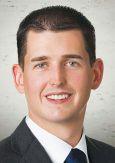




FARGO – Most organizations have a set of criteria which they use to measure progress toward achieving specific goals. Today, industries have developed these criteria into what are commonly called key performance indicators or KPIs.
KPIs are useful in two primary ways: one is to measure progress, another is to measure performance. Establishing them can give leadership a more concrete way of determining whether the organization is moving in the desired direction or slipping.
In addition to using internally developed key performance indicators, a business will also want to look at their KPIs versus those of their industry.

A number of years ago, a national organization that I’m involved with started talking about a service performance measurement as the group tried to help its members improve growth and profitability. I agreed the criteria made sense, pushed my organization toward the new set of goals and created evaluation criteria to judge our progress. And in addition to creating the measurement criteria, we put rewards in place for those involved. After a short while, it appeared we were doing quite well because the numbers were getting better. But as time progressed, certain employees started complaining about one of the people who was being rewarded based on this performance measurement.
To my dismay, we discovered that the manager was changing a key input to make the measurement look good. This manager had “outsmarted” the system in order to get a financial reward, even though his or her real performance didn’t deserve any rewards. On top of cheating the system and the business, the manager’s actions were very frustrating to co-workers.
After the manager’s departure, some people expressed happiness and as is human nature, some felt sorry for the manager. But today the group works better together and keeps stricter numbers; and as a result, the particular KPI is better than it was when the cheater gamed the system.
Health care providers at one time focused their efforts and some advertising on their patients’ average length of stay. The criterion was established as a means of measuring the effectiveness of the care received at a specific institution. In theory, the shorter the average person was hospitalized, the quicker that person was regaining his or her health, and this would be evidence of the hospital’s high level of care and medical expertise.
Unfortunately, once insurers and others started using this criterion for reimbursement purposes and to cut costs, medical providers were pushed to get people out of the hospital quickly, sometimes without proper regard for the patient’s state of health. This is another example of a KPI being used the wrong way.





As time progressed, a new criterion known as the readmission rate became part of the KPIs for most health care providers. Naturally, when we are hospitalized, most of us want to get back home as soon as we can. But we’d prefer to be healthy when we do so, rather than sick enough that we’re likely to return to the hospital for another stay.
KPIs can help management determine if overall goals and standards are being met or not. But by focusing on price or raw input cost, the need to track and measure the desired outcome is often missed.















In a previous column, we discussed labor input costs in respect to profitability per employee; and as that column mentioned, lower or higher wages do not necessarily lead to improved profits for a business or organization. Instead, productivity leads to profitability.
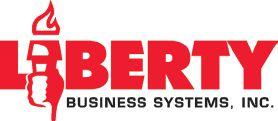
Key performance indicators can be a great tool and are very valuable to any organization. But it’s important to make sure your organization measures the right things the right way.

 Matthew Mohr CEO, Dacotah Paper Co. Fargo, N.D.
Matthew Mohr CEO, Dacotah Paper Co. Fargo, N.D.
mmohr@dacotahpaper.com














Cameon Eisenzimmer, prairie archeologist, talks about her work with Ackerman-Estvold, an architecture/ engineering firm
Cameon Eisenzimmer is an archaeologist, cultural resource manager and GIS or geographic information system analyst for Ackerman-Estvold, a Minot, N.D.-based architecture and civil engineering firm. In this Q&A, she talks about her work.

Eisenzimmer has a bachelor’s degree in anthropology, archaeology and geoscience from Minnesota State University Moorhead, a master’s degree in anthropology and biological anthropology from Wichita State University and a graduate certificate in historic preservation from the University of Kentucky.
I’m a fifth-generation North Dakotan, and I actually grew up in a house with four generations: my great-grandmother, my grandmother, my mother and myself all lived in the same house. So history has always been important to our family.
Furthermore, it was the house that my great-grandfather had built from a railroad car. Back in 1903, my great-grandfather actually worked for the railroad, and he lived one block north of the tracks.
So, when they decommissioned an old railroad car, he got a whole bunch of his railroad buddies to bring that railroad car one block north. They all got together, pulled it by horse, got it up the street, and it still stands today.
Right. The house has been added on to, but it has been standing since 1903. My grandmother currently lives in it, and I co-own it.
‘Always walking with my head down’
DID YOU PURSUE YOUR INTEREST IN HISTORY IN COLLEGE?
Yes. All the way through high school, I had that interest. I thought I might want to be a history teacher, but Minnesota State University Moorhead was at a career fair here in Minot, and they had a booth set up about archaeology. The staffer talked about not just studying history, but being able to go out in the field and pick up an artifact, a piece of the past – and that when you do so, it’s almost like being transported back to that time. So instead of just teaching history, you become a part of it. And that’s what really fascinated me. I figured I’d rather be out in the field doing something different every day than being at the front of a classroom. So I decided to go the archaeology route instead of the teaching route.
DO YOU REMEMBER THE FIRST TIME YOU WERE ABLE TO GO OUT IN THE FIELD?

A.At MSUM, where I majored in archaeology, we used equipment to not necessarily dig under the earth, but to see underneath it, like ground-penetrating radar.
And I remember working out in a farmer’s field; he was saying that he had been coming across some artifacts. We went out there with some of our equipment, which detects depressions by letting you see where the soil had been disturbed. We saw row after row of what ended up being graves. We’d actually found a cemetery that no one had any idea was there. We were able to mark it off, let people know about it and bring closure to some of the families who had no idea where their loved ones were buried. And at that point, I knew I was in the right profession.
NOW YOU’RE WORKING WITH ACKERMAN-ESTVOLD, AN ARCHITECTURE AND CIVIL ENGINEERING FIRM. DO MANY ENGINEERING FIRMS EMPLOY ARCHAEOLOGISTS?
A.Normally, archaeologists open their own consulting firm and will have experts in archaeology, prehistoric archaeology and historic preservation. So, what makes us unique is the fact that I have all of those degrees as one, which means you’re kind of a one-stop shop.
So not only can I do archaeology – which spans the period from European contact to about 50 years ago – but also I can do prehistoric archaeology, which is pre-contact and earlier. That means I could do Native American sites and sites that are much older than that.
And now I have my graduate certificate in historic preservation, which lets me analyze structures and buildings and bridges, see what their historic potential is and recommend whether they should be nominated for the National Register of Historic Places. A.
Q. WHAT STAGE OF A PROJECT DO YOU GET INVOLVED IN?
I start at the very beginning, because in the planning stages and if there is any type of federal money or permitting involved, we have to go out to the site and do a field survey to get an initial impression on whether there may be a prehistoric or historic site there.
Eventually, we may do a pedestrian survey, which is where we walk the entire site. We’ll mark with flags everything that we find, and if it starts to look like we’re finding a pattern, we’ll contact the State Historical Society, and we’ll come up with a game plan with them.
Because not every site needs to be excavated. At some sites, you just need to mark where things are at, and you’re good to go from there.
A.It really depends on where we’re at. In North Dakota, what we encounter quite a bit are lithic (or stone) artifacts from Native Americans such as broken arrowheads. Pottery is another big thing that we find – pottery shards from Native Americans. We also encounter a lot of stuff from the farmsteads that were here – nails, old farm equipment, foundations of old buildings. And all of that stuff has to be recorded and marked. A.
Q. SO A RUSTED CAR ON THE SURFACE NEEDS TO BE REPORTED?
Yes, but very often, they just want to know that it’s there. It doesn’t mean that it’s going to do anything.
Coins, rusted cars, an old tractor – we have to mark all of that down, fill out a form and submit it to the state. A.
Q. ARE THERE SITES IN THE WORLD THAT YOU’D LIKE TO VISIT?
Any type of human remains is going to put a stop to any type of construction. If it’s especially old – such as, say, when the Canadian fur traders came through – we might end up having to detour a road around it, for example. Or if there are burial mounds, construction is going to have to move.
That’s exactly right. Like I said, picking up an artifact is almost like traveling through time. You can picture what it was in its day, and you’re wondering, who left it there? Why was it dropped? Why was it abandoned? There’s a whole story that’s told in each one of those relics.
A.
Not really. For me, prairie archaeology has always been where it’s at. It’s in my blood, it’s part of my history.
That’s why, during my weekends and evenings, I take old quadrangle maps and locate old churches, because where old churches were, normally there are old cemeteries that have been forgotten. I’ll mark them, get all the information, GPS it, and send the information to the state.
AT TIMES, YOU MUST HAVE TO GET DIRTY IN THE COURSE OF YOUR DAY. A.
Yes, but I’m lucky, because I’m one of the few who gets to wear blue jeans to work! I never know when I’m going to get a call to go out into the field. I go from having clean clothes to being covered in mud because I’m trying to find something out in the field.
Q. IT SOUNDS LIKE THERE ARE ARTIFACTS EVERYWHERE YOU LOOK, INCLUDING ON SEEMINGLY EMPTY FARM FIELDS ACROSS THE GREAT PLAINS.
Q.
DOES YOUR KNOWLEDGE OF ARCHAEOLOGY CHANGE THE WAY YOU LOOK AT LANDSCAPES? A.

Absolutely. I’ve taken a couple of our engineers out in the field, for example, and it’s great to compare notes on how we see things. For example, I see features in the ground – an old prairie trail here, the depression of a house there. I’ll see a small rise and think, “That would be a perfect place for a camp, while they wouldn’t build down here because it’s too low and they’re into the wind, so it’s not going to be the best protection for them.” Those are the things that I pick up on, while they’re looking with their engineers’ eyes and seeing such things as whether the soil is stable enough to build on.
A.More than likely, there are. Think about the fact that even today, we drop coins out of our pockets, we lose a pencil. Well, the same thing happened a hundred years ago, and 500 years ago and a thousand years ago.
There are artifacts all over. That’s why, while people always say they walk with their head up, I’m always walking with my head down.













FARGO, N.D. – In life as in investing, there’s no point in lamenting missed opportunities. The trick is to spot the next Apple, the next Microsoft, the next “big thing” before it rockets up the growth curve.
With that in mind, here’s our guess about a coming big thing in health care.
But be warned:
This news may literally put you to sleep. Here’s why we think sleep is likely to command ever-more attention from scientists, hospitals and society in years to come.
• It’s already happening. “Our Sleep Clinic has grown immensely in the past few years,” said Dr. Kevin Faber, neurologist and medical director of sleep medicine at Sanford Health in Fargo.
“When I got here 12 years ago, I was the second physician; we also had a couple of mid-level providers and a handful of technicians.
“Now, we have triple all of that.” Sanford’s Sleep Clinic is up to 10 beds, 10 providers and 25 technicians and is poised to keep growing.
And Sanford’s not alone. Nationwide, there were very few sleep centers in the 1970s. There are more than 3,000 of them today, including in Fargo, Bismarck, Sioux Falls and other Prairie Business cities, where most major hospitals have one.
Moreover, the market for sleep apnea diagnostic and therapeutic services is expected “to proliferate at a compound annual growth rate of 6 percent during the forecasting
By Tom Dennisyears of 2019-27,” MarketResearch.com is predicting this year.
• The science is still young. “Sleep up until the 1980s was ignored, really,” said Dr. Shaun Christenson, neurologist and sleep-medicine specialist at Essentia Health’s Sleep Study Lab in Fargo.
medical testing procedures, such as brainwave testing for seizures,” Christenson said.
“We saw people stop breathing while they were asleep, for example. And we started wondering, ‘Well, does that have any implications for them?’
“And sure enough, it does.”
In fact, those implications are huge. “Sleep is a large component of our health, and not just cognitive status and mental health,” Christenson said.
“Sleep disorders with sleep deprivation will lead to more risk of cardiovascular diseases such as heart attacks and strokes, and maybe even of cancer.”
Then there’s the impact that sleep – and the lack of sleep – have on performance.
“I had the good fortune of addressing the Bison football team at North Dakota State University a few weeks ago.” Faber said. “And for the first half-hour, I talked with them about how if you want to perform at your peak on the field, you’ve got to protect your sleep.”
When varsity men’s basketball players at Stanford slept longer, their sprinting times and shooting skills improved, researchers found. When varsity college tennis players did the same, they served more accurately.
“Except for occasional circumstances, we thought of it as just a time when you are resting, you are unconscious. And not much else about it was known or was looked into.”
But around that time, researchers noticed “that people were doing odd things during various
Concluded the latter study, “An increase in sleep of approximately two hours per night significantly increased athletic performance in college varsity tennis players.”
And that finding shows up in all aspects of performance, not just sports, as anyone who has driven while drowsy knows.
DR. KEVIN FABER, NEUROLOGIST AND MEDICAL DIRECTOR OF SLEEP MEDICINE AT SANFORD HEALTH IN FARGO, HOLDS AN INSPIRE IMPLANTABLE DEVICE WHILE SITTING ON A BED IN THE SANFORD SLEEP CLINIC. THE INSPIRE DEVICE -- A TREATMENT FOR OBSTRUCTIVE SLEEP APNEA -- MILDLY STIMULATES THE NERVES THAT CONTROL AIRWAY MUSCLES, KEEPING THEM OPEN. IMAGE: NICK NELSON/FORUM NEWS SERVICE

• Some key gains are immediate. When people stop smoking, they’re often hoping to avoid diseases decades from now. When they exercise, they’re likewise trying to improve their long-term odds.
But when sleep-apnea patients at CHI St. Alexius Health’s Sleep Center in Bismarck first put on a CPAP machine, they often feel better within hours, said Tara Vander Laan, respiratory therapist and lead sleep tech at the center.

“The rooms in our Sleep Center look like hotel rooms,” Vander Laan said. “We have queen-size beds, your own TV, your own little bathroom.”
The difference is that the nightstand is full of sleep equipment, and patients get “wired up” for their overnight sleep study before bed. The electronic monitors read heart rate, breathing, brain waves, blood-oxygen levels and other indicators, and the data gets watched all night long by a technician down the hall.
“Sometimes, if the patient stops breathing enough times, the technician will wake them up and put a CPAP mask on them,” Vander Laan said.
“Then in the morning, I’ve heard patients say, ‘I can’t believe it’s morning already,’ ‘I feel so great,’ ‘I haven’t slept that well in years,’ and ‘I don’t think I’ll even need a nap today.’
“It’s the best part of my job,” she said.
Sanford’s Faber agreed. “Fix your sleep now, and over the next few days, watch yourself start to feel better,” he said.
“It’s a very rapid response when we start fixing our sleep. And if it’s something very specific – like obstructive sleep apnea – that’s affecting their blood pressure, blood sugar, cardiac rhythm and cognitive functions, those things also may improve starting right away.”
That’s why psychiatrists, cardiologists and diabetes specialists, among other providers, have started referring patients to sleep centers, he said. They’ve learned it’s very hard to control conditions such as high blood pressure or diabetes in patients with untreated sleep apnea.
• The more we learn, the more we’re fascinated by sleep. You may think we “turn ourselves off” at night, during sleep. But in fact, “sleep is a whole lot more complicated, and it’s a much more active state than you might think,” reports Sleep.org, the website of the National Sleep Foundation.
HEALTHCARE
Z Z Z MAY 2019 VOL 20 ISSUE 5
WHEN ACTIVATED BY THE REMOTE (CENTER), THE SURGICALLY IMPLANTED INSPIRE DEVICE (BOTTOM RIGHT) GENERATES A PULSE THAT OPENS KEY AIRWAY MUSCLES DURING SLEEP. IMAGE: NICK NELSON/FORUM NEWS SERVICE

“In fact, while you’re getting your zzz’s, your brain goes through various patterns of activity. It’s a predictable cycle that includes two distinct parts – NREM, or Non-REM sleep, plus a REM or ‘Rapid Eye Movement’ cycle.”
During NREM sleep, our bodies slip from drowsiness to deep sleep. During deep sleep – an especially restorative period -- the brain produces slow-frequency delta waves, and “the body repairs muscles and tissues, stimulates growth and development, boosts immune function and builds up energy for the next day,” Sleep.org reports.
Try to wake a person during this period, and it’s almost like waking a bear.
Then comes REM sleep, an enchanting aspect of human life. REM sleep is dream sleep – the period when most dreaming occurs. And it’s
Z Z Z Z TWITTER.COM/PRAIRIEBIZ FACEBOOK.COM/PRAIRIEBUSINESS PRAIRIEBUSINESSMAGAZINE.COM 22
marked not only by your eyes jerking rapidly, but also by near-paralysis of the rest of your body, plus brain-wave patterns so active that they’re hard to tell apart from wakefulness.
What’s the point?
“We don’t yet know,” said Christenson of Essentia.
“Processing memories; that’s probably what’s going on. One of the best analogies I’ve heard is this: A neuron looks like a tree, and you literally have trillions upon trillions of connections between neurons in your brain.”
That’s more connections than there are stars in the sky, he said.
“And when you dream, what’s probably happening is that you are pruning the branches of that tree, so it has appropriate connections and our memories and cognitive functions are stable.”
• Sleep disorder treatments continue to improve. Here’s one of the most recent and novel: The Inspire device.

Approved for patients who have moderate to severe sleep apnea and have failed CPAP therapy, the pacemaker-sized Inspire unit gets implanted just below the collarbone. One lead from the device senses breathing, while the other mildly stimulates key airway muscles, opening them.



“So, people who don’t tolerate CPAP are learning they have another option,” Faber said.


“It’s not just, ‘I’m going to wait to have a heart attack’ or ‘I’m not going to admit that I’ve stopped using my device.’ It’s ‘I’m going to seek treatment, because I’m tired of being tired.’”
Sanford Fargo is one of the few centers in the region where the Inspire treatment is available, Faber said.
“Sleep is one-third of our life, but it’s a third that people have kind of pushed aside,” Faber said.

“But now we know that if we ignore that third of life, it’s probably going to affect the other two-thirds, because the quality and continuity of our sleep directly impact metabolism, cognitive function and cardiovascular function head to toe.
“And it doesn’t matter how or why you become sleep deprived. The effects are going to be felt the next day and over the years, metabolically.
“It’s important stuff.”
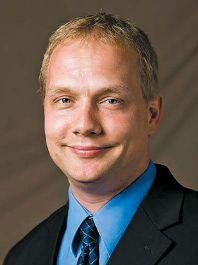
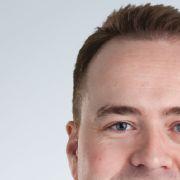
701-780-1276
tdennis@prairiebusinessmagazine.com






Heathe rWinkler chose MSUM’s Master of HealthcareAdministration forits online flexibility,s trong curriculumand pe rsonal at tention.
Checkout all of MSUM’s healthcarerelated offerings at mnstate.edu/academics.


SanfordH ealth Executive Health Ce nter hasanexclusive program that provides you with acom plete physic al examination, preventative scree ningsand test sina private, comfor table setting, taking only on ebusinessday to me et allofyourm edic al ne eds.
To schedule anap pointm ent, call (701)2 34 -4350.
sa nford health .org
As ahands-onlearner it wasimpor tantfor me to takewhatIlearned in classand apply it right away to my work –Heather Winkler, QualityDataAnalyst, Hospiceofthe RedRiver Valley
Prairie Business asked a selection of our 2018 50

The best way to know what makes employees happy is to ask! Starion Bank periodically surveys employees, and the 2018 survey identified five key initiatives. Some of the areas highlighted – such as awareness of our education reimbursement program – simply required additional communication, while others (such as implementing a weekly jeans day) resulted in policy changes.
An integral part of new employee orientation is the Buddy Program, which pairs a new employee with an experienced employee. It’s meant to build a strong connection early on between the new employee and our company, helping the newcomer feel at home and have someone to answer the “silly” questions we all have at a new job.
ONE has been involved with two sizeable mergers over the past two years. That means change has been a big part of HR’s focus – something I’m sure a lot of companies can relate to.
We discovered early on that we should focus on two key areas to ensure our employees’ engagement and commitment, and they both revolved around empowerment:
• Ensure we have a management structure and training in place to foster ongoing feedback, communication and updates; and
• Develop multiple ways to empower our employees to offer solutions, process improvements and have a voice in the culture and associated initiatives.
In fact, this program has been so successful (based on the survey) that we’re in the process of developing a peer mentorship program to connect individuals across the organization, enhancing relationships and interactions beyond an individual’s immediate team.
Brenna Grossbauer Chief Human Resources Officer Starion Bank Bismarck, N.D.

With these two areas of focus, we’ve been able to make sure we create empowering leaders and empowered employees.
Kristi Spindler Human Resources Director ICS Consulting / Obermiller Nelson Engineering Fargo, N.D.A top reason that employees cite for working at Applied is the culture, which is known for employee ownership and our team environment.
Employees are a priority, and each of our dedicated employee-owners feels a sense of purpose, achievement, pride and fulfillment. The HR Team reinforces this culture through company policies and programs, leading by example, screening candidates for culture fit and employee onboarding and training.
Communication is key. From the start of employment, the HR team establishes that we’re a resource for all employees for support in their roles. We’re here also as a strategic partner to help the business succeed and the organization through change.
Through words and actions, our HR department lives up to our corporate values every day to inspire loyalty and commitment among employees.
Human Resources makes it a priority to consider the true corporate values that our bank stands for, and how these values provide our roadmap in employee engagement and collaboration throughout the organization. The four corporate values that truly inspire loyalty and commitment for our employees are:
• Own the choices you make
• Take pride in your work
Our HR team strives for continuous improvement. We ask employees what we’re doing well and how we could improve. We offer them continuing education and training, career development, opportunities to work with something new, advancement opportunities and more, so they’re able to continually grow.
Cassie Muscha Human Resources Director Applied Engineering Bismarck, N.D.• Leave your mark on our communities
• Seek the sunshine every day
These four values guide us in HR every day!
Cheryl Streifel Director of Human ResourcesFirst International Bank & Trust Bismarck, N.D.
Developing future leaders within our organization is crucial to our company’s future. This commitment to our employees is supported through our two leadership development programs, which are offered to each Alerus employee through an application process.
• Foundations: This program is meant to help those newer to the industry learn more about Alerus and our leadership strengths. Participants hear from our own leaders on what they’ve done to develop their careers, learn the value of building a network of industry and community colleagues and participate in a volunteer community impact project.
• STRETCH: Designed for those who’d like to further their personal and professional growth through various
Our secret? The culture of First Western Bank & Trust. When I ask our employees what inspires loyalty and commitment, they say, “the culture and the First Western family.”
Our management lets our employees “create their dream job.” If you are successful in your position and want to learn more or do more, you can.
Employee input is listened to and taken seriously. Appreciation is constantly being shown in new ways. For example, employees asked for the option of buying life insurance for themselves and their families; the bank added it to our benefits about a year and a half ago.
Last year, the bank started an employee mortgage program with special rates and terms. This year, it added a no-fee Health Savings Account investment option and launched a low-interest consumer-loan program for employees.
industry-specific topics presented by our executives and division leaders, participate in a personality assessment to help establish personal development goals, engage in a mentorship program, and learn from various experiences through ongoing group discussions and a book club. Both programs provide leadership development opportunities that have helped employees grow their careers at Alerus.
Teresa Wasvick Director, Human Resources Alerus Grand Forks, N.D.If I think a good thought about an employee, I tell them, and if I hear another speaking highly of an employee, I tell them as well. No one ever reaches a “grouchy” HR staff member.
To kick off Appreciation Week – our annual week-long celebration of our employees – senior managers greet our employees with a handshake and a thank you as they come to work.
I know you hear many businesses brag about their culture, but in the case of First Western Bank & Trust, it’s the truth.
Ilene Baker Human Resource Manager First Western Bank & Trust Minot,


N.D.

Constant communication. Constant communication from leadership about the company’s direction and purpose is vital. One important effect is transparency, and transparency inspires loyalty.
Hire the right people. Hiring people who align with the company’s vision, mission and values is also a big priority. When employees know and buy into what their company stands for, they are more engaged and committed.
Career path and professional development. Employees thrive when they are provided a career path and professional development opportunities because they see a future for themselves. When companies invest in employee growth, employees are loyal and committed to staying with the company.
Establishing and maintaining a great company culture is the key to inspiring loyalty and commitment. At Ulteig, we take this very seriously, particularly because we are all employee-owners who literally have a vested interest in the success of the organization.
Strong culture is created through offering exceptional benefits, supporting career growth and encouraging development, empowering employees and providing a flexible workplace.
In addition, the company values transparency, recognizing that keeping employees informed about the concerns of the business establishes an open and honest environment that is greatly appreciated.
Actively listen. Employees frequently communicate what they believe will improve their overall work-life balance. HR professionals need to actively listen and provide feedback.
Our HR team recently wrote flexible work schedule and tuition reimbursement policies. Both were met with very favorable responses and produced more engaged employees.
Joni Smith Human Resources Manager Moore Engineering West Fargo, N.D.


Ultimately, we want to give employees the chance to do what they do best: listen to our clients, understand their challenges and provide effective solutions. That’s a critical component to ensuring an employee’s commitment to the company.
Nichole Dyer Talent Acquisition Leader Ulteig Greenwood Village, Colo.People, period. People are truly our greatest differentiator. “JLG really is a big family,” an employee stated during a recent conversation.
We call ourselves JLGers, because it’s beyond a marketing tagline; it defines who we are – we care.
Our policies and practices maintain a strong focus on ensuring employees thrive in their career and have growth opportunities, that they come to work “doing what they love,” have both the competency and character to be a JLGer and experience an environment that supports and challenges them to deliver their best performance and be their best self.
WCCO Belting is breaking manufacturing myths with First Impression Management practices.

Manufacturers are regularly stereotyped as minimum-wage employers offering little to no benefits in exchange for monotonous work on a dirty production floor. For job seekers, it can be intimidating to both apply for a position in manufacturing and consider it a longterm career opportunity without knowing what goes on “in the back.”
That’s why WCCO changed our hiring strategy to be completely transparent.
WCCO’s job application includes a list of non-negotiable standards that the candidate must agree to follow before being hired. This shows what they can expect from
We are 100 percent employee-owned – and as a result, our voice elevates our communities, internal and external, and that is a driving force for excellence.
We’re a growing firm, so most days are challenging, though very rewarding. Plus, it’s rewarding to work with such great people who inspire you to be your best.
Angela Bolonchuk Director of HR JLG Architects Grand Forks, N.D.WCCO Belting as an employer, as well as the conduct and performance the company expects of our employees in return.
We also forego traditional conference room “interrogations” and invite candidates on a full tour of WCCO’s facility. The conversational-style interview process encourages them to ask questions and helps our production manager learn where the candidate will best find job satisfaction.
Rod Koch Vice president of operationsWCCO Belting Wahpeton, N.D.


 By Tom Dennis MORE ON: Page 28
By Tom Dennis MORE ON: Page 28
GRAND FORKS, N.D. – Let’s put this in terms Prairie Business readers will understand: Flood insurance.
Every year, Americans who get flooded discover something that residents of Fargo, Grand Forks and other flood-prone cities learned long ago: Homeowners must never assume they’ve got flood insurance.
That kind of coverage is always a separate buy. So, “don’t think you’ve got flood unless you know you’ve got flood,” as Richard Penning, Bell Insurance vice president and agent in Fargo, put it.
And just as it is with flood insurance, so, too, is it with employment practices liability insurance or EPLI.
EPLI is insurance to protect businesses from risks associated with employee lawsuits, said D.J. Campbell, administrative services manager with EMC Insurance Companies in Bismarck, N.D.
“Those can range from sexual harassment, wrongful termination, discrimination, retaliation – a lot of those things that we’re hearing more and more about.
“EPLI is there to take those exposures and transfer them over to an insurance company, so the business owner can have peace of mind,” Campbell said.
And here’s the flood-insurance parallel: General liability policies do not cover those claims.
The insurance industry created EPLI as a separate product years ago, said Chad
Lindgren, Vaaler Insurance producer in Grand Forks.



“Business owners sometimes think, ‘Well, I have a million-dollar liability policy’,” Lindgren said. “‘Everything’s covered, right?’”
Wrong: “General liability generally covers ‘slips and falls,’ not employment or malpractice or workmen’s comp,” Lindgren said.
“In the business world, there are different lines of coverage for different perils that you have to think about. EPLI is one of those.”
And these days, EPLI often is mentioned in the same breath as cyberinsurance, because both products cover what seem to be sharply increasing risks.
American companies in 2016 faced a 10.5 percent chance of having an employment charge filed against them, reports the Hiscox Guide to Employee Lawsuits. That’s quite a bit higher than the companies' risk of a fire.
Changing times help explain why, according to TheIntercept.com. “Harassment complaints filed with the U.S. Equal Employment Opportunity Commission are on the rise, perhaps sparked by the wave of #MeToo revelations,” the website reported in February.
“The EEOC received 7,609 sexual harassment charges in its 2018 fiscal year, up nearly 14 percent from 2017.”
Despite that growth, comparatively few companies buy EPLI policies, says HRToday. com, the website of the Society for Human Resource Management.
“Only about 4 percent of U.S. firms had it in 2016,” HRToday.com reported in August.
“Still, that covered 33 percent of all U.S. employees, since larger employers with more workers are more likely to buy it.
“Nearly 56 percent of organizations with 5,000 or more employees carry it, compared with less than 2 percent of businesses with 1 to 4 workers.”
Small businesses should be careful not to underestimate their exposure.
You don’t have to look far to see news of people filing wrongful-termination and similar claims, said Lindgren of Vaaler Insurance.
“Just in our agency alone, we have handled dozens of EPLI claims over the years,” he said.


“So it does happen, even in our ‘North Dakota nice’ area.”
One prospective EPLI customer is a construction firm, Lindgren said. “Their workforce is mainly hard-working guys, but the owner said, ‘You know, this has been a concern of mine for a couple of years,’ so we’re giving him a quote.
“He doesn’t think he’s doing anything wrong, but he’s worried about a claim and about lawyers’ costs.”
Two quick points about those concerns:
First, the biggest key to minimizing risk (and decreasing EPLI premiums) is to make sure, as best as possible, that you’re not doing anything wrong.
That means hiring HR people who know the law and will set up strong employment policies, or – for smaller firms – perhaps retaining HR consultants who can do the same thing.
“Loss prevention is really your best protection,” said Penning of Bell Insurance.
“Understand the laws, train your employees, take all complaints seriously, have a well-thought-out Employee Handbook and things like that.” The stronger your employment practices and policies, the lower your premium is likely to be, Penning said.
Second, know that a key benefit of EPLI insurance is that it typically covers defense costs.

“You’ll have a level of coverage not only for damages, but also for defense,” said Campbell of EMC Insurance.

“That’s important, because the defense costs often are significantly higher than the damages.”
FitSmallBusiness.com, a digital resource for small businesses, offers the following tips for companies considering EPLI.

For small businesses, “the cost of EPLI insurance typically ranges in premium between $800 and $3,000 annually, with $1,200 being the average annual cost of EPLI,” the website reports.
For large businesses, the premium cost can run into five or even six figures.
“Deductibles can be as high as $25,000 to $50,000 for small businesses,” according to the website.
And as with buying auto, homeowners or any other type of insurance, the challenge is to balance coverage limits and deductibles to get a good policy at the right price.
“I work not only in insurance but also in HR, and EPLI is a hot topic on both sides,” Campbell said.
That’s because both fields sense the claim numbers are on the rise. “This means it’s even more important for businesses to not only reduce their risks, but also have the coverage so that if something does happen, the business can continue on.”

 Tom Dennis Editor, Prairie Business 701-780-1276
Tom Dennis Editor, Prairie Business 701-780-1276
tdennis@prairiebusinessmagazine.com
• Sexual harassment.
• Wrongful termination.
• Discrimination based on certain prohibited categories, such as age, race and sex.
• Retaliation.
• Failure to promote.
• Defamation or libel.
• Invasion of privacy.
• Employment-related misrepresentation, such as making promises and representations to potential employees that turn out to be untrue.
Source: Society for Human Resource Management

SIOUX FALLS, S.D. – Eighty thousand. Two hundred thousand.
When it comes to Cornerstone Bank’s new office building here, those numbers explain it all, said Evan Ingebrigtson, market president with the bank in Sioux Falls.
“In the early 1980s in Sioux Falls, we sat at a population of about 75,000 or 80,000 people,” Ingebrigtson said.
“Today, we are close to 200,000 just in the footprint of Sioux Falls. And if you involve the whole metro area, it’s more like a quarter-million.
“That’s phenomenal,” he noted. And it’s why Cornerstone Bank, which has 10 locations around North Dakota, expanded to Sioux Falls and in December, opened its new two-story, 16,000-square-foot branch office building there.
Here’s another number, this one helping to explain the new building’s specific location: 30,000.
That’s the 2018 traffic count on South Louise Avenue past its intersection with West 69th Street, the corner that now hosts Cornerstone Bank’s new building.
But not only is that 2018 traffic count already up 25 percent from 2014, it’s poised to at least double within a few more years. That’s because 69th and Louise is the heart of one of the fastest-growing areas in the state -- one that includes Avera on Louise, the $172 million Avera Health campus that’ll open later this year.
Avera on Louise, by the way, is located kitty-corner from the new Cornerstone Bank.
Cornerstone Bank currently employs 12 in its
new location, but the office can accommodate up to 30, Ingebrigtson said.
Our prediction: they’ll be needed. “This corner of the city, near the elbow of Interstates 29 and 229, is poised for transformation as developers and investors who own much of the remaining countryside continue to build out,” the Sioux Falls Argus Leader reported in November. And “the amount of development there today is nothing compared to what developers have in mind for tomorrow.”
Tom DennisEditor, Prairie Business 701-780-1276
tdennis@prairiebusinessmagazine.com

TOP LEFT: VIDEOCONFERENCING TECHNOLOGY IS AMONG THE FEATURES OF CORNERSTONE BANK’S NEW OFFICE IN SIOUX FALLS, S.D. IMAGE: CORNERSTONE BANK

TOP RIGHT: A FIREPLACE IN THE LOBBY IS ONE OF THE FEATURES OF CORNERSTONE BANK’S NEW BUILDING IN SIOUX FALLS, S.D. IMAGE: CORNERSTONE BANK

BOTTOM LEFT: ARTWORK IN CORNERSTONE BANK’S NEW SIOUX FALLS, S.D., OFFICE SHOWS THE FALLS OF THE BIG SIOUX RIVER, THE FEATURE FROM WHICH SIOUX FALLS GOT ITS NAME. IMAGE: CORNERSTONE BANK

BOTTOM RIGHT: CORNERSTONE BANK CURRENTLY EMPLOYS 12 AT ITS NEW OFFICE IN SIOUX FALLS, S.D., BUT THE OFFICE COULD ACCOMMODATE UP TO 30. IMAGE: CORNERSTONE BANK

CORNERSTONE BANK STAFF POSE ON THE UPPER LEVEL OF THE BANK'S NEW BUILDING IN SIOUX FALLS, S.D. IMAGE: CORNERSTONE BANK

Editor’s note: Carissa Hauck, originally from Belle Fourche, S.D., and Bianca Hutzler, originally from Germany, met as students at Black Hills State University in Spearfish, S.D. Today they’re partners in Scobi Kombucha – “handcrafted, artisanal, small-batch kombucha, made in Spearfish, S.D.,” the company’s website (ScobiKombucha.com) states.
A Black Hills State class in Small Business Management helped the partners get the business up and running, as the two explain in this Q&A.
By the way, kombucha – aka “booch” – is a fizzy, fermented, sweet-and-sour drink made with tea.
Q.
A.
Bianca: I came to the U.S. about three years ago through an exchange program. I stayed at Black Hills State, where I got a scholarship for one year. Then I decided to get my degree from the university, because I really liked the program and the fact that you can combine entrepreneurship with their business specialization.
Q. BIANCA, YOU GREW UP IN GERMANY. HOW DID YOU WIND UP IN SOUTH DAKOTA? Q.
HOW DID THE SCHOOL APPEAR ON YOUR RADAR?
Bianca: It’s a funny story, because I didn’t choose Black Hills State at all. It chose me. In the interview for the scholarship, they ask, “Are you more a city person or a country person?” I told them that if I were to end up on a farm or a ranch or somewhere in nature, that would be fine. I didn’t want to be living in a huge city.
So, I’m in my senior year now, and I’ll be getting a bachelor’s degree in business administration with a specialization in entrepreneurship and marketing. A.
To be honest, I was hoping it would be Colorado with its mountains, or California, or a warmer place. Then I ended up in Spearfish. (laughs)
But I instantly fell in love with the Black Hills and the community, and that’s a big reason why I decided to get my degree from the university.
WHAT HAVE YOU LIKED ABOUT IT?
Bianca: It’s the whole package. I love the nature here; I think the Black Hills are just beautiful. But the biggest things for me are the people, the community and the university – the friends I’ve made and the business program.
Q.
CARISSA, I GATHER THAT THE KOMBUCHA BREWING STARTED WITH YOU?
Q.
Carissa: RIght. I have been brewing kombucha at home for a few years now. I had always been into making things with my hands, so my sister – she actually had a scoby and shared some with me, and … A.

Q. A WHAT? A.
A.
Carissa: A scoby. That stands for “symbiotic culture of bacteria and yeast.” It looks like a mushroom cap, and it sits on top of the sweet tea base that you brew.
Then as it ages, it ferments the sugar from the tea and converts it into the probiotic live culture that gives it that sour, sweet kind of tangy flavor that people love.
The scoby grows as you brew more and more tea, so you can peel the different layers apart and give it to someone else. That’s why kombucha also is called a friendship tea – like friendship bread made with sourdough starter.
So, my sister gave me one and showed me how to do it. Using that same scoby culture, I’ve been making kombucha for a few years and sharing it with Bianca – by then, we were roommates –and with family and friends.
THEN AN ACCIDENT INTERVENED.
Carissa: Yes. I graduated from Black Hills State in May 2018, and right before graduation, I had an accident with my knee that required surgery. So, I’d been planning to apply for human resource management jobs, but the knee surgery threw that out the window, because I had to recover for the rest of the summer and fall..
I didn’t have much to do, so I was at home, brewing kombucha. And Bianca said, “Why don’t you make it into a business? It’s so good, and people really like it; you’ve only gotten positive feedback. You should go for it.”
And I thought, “OK, well, I don’t have anything else to do.” (laughs)
So that’s where the idea started.
A.Carissa: Right. That fall, Bianca had to come up with a business idea for the class, and she asked me, “What if I pitched the kombucha business plan, and we see how it goes?” I said sure.
And she did, and people liked it!
She got a team together; I was an honorary team member, bringing what I had put together so far. Then with the help of the resources from the course, we developed a full-fledged business plan. It was great.
Bianca: That class was a great support system, because we had the resources and knowledge through the professor and the other students.
We entered business-plan competitions, and in one of them – an on-campus Shark Tank event – we won first prize! That meant we won some start-up funding, and that really helped us start our production, which we’ve been working on ever since.
A.Carissa: We are renting a commercial kitchen space that’s available on evenings and weekends. And we have a special room that we remodeled to keep all of the kombucha in a sanitized and temperature-controlled environment.
Carissa: Yes, it took us a long time to get all of the legal and health-code elements worked out. It’s a very new process, especially in South Dakota. There are only one or two other people who brew kombucha on a commercial level in the state, so even then South Dakota Health Department doesn’t have a whole lot of knowledge about it. We are all kind of learning together.
A.Carissa: We started commercial production earlier this year, and we have a few retail accounts in the Spearfish area and in Rapid City, S.D. So the plan is to expand in the Black Hills area; and for us, this is always connected with a lot of educational work, because a lot of people in the Midwest don’t know about kombucha.
Of course, that is also our opportunity, because there is so much potential. In California, for example, there is kombucha everywhere. We have driven around California, and it’s wild; even gas stations have kombucha advertised. “We have kombucha on tap here,” the signs say.
So it’s becoming more and more mainstream, and as you know, the trends on the coasts tend to creep in to the central part of the country.
When we were doing all of our market research, Bianca and I were thinking this is perfect timing for us, because kombucha is on the rise.
Bianca: And especially in the Black Hills, where we found that booch is a good fit because people are so outdoorsy and living very active lifestyles. In the past few years, we’ve seen two more yoga studios in Spearfish, for example.
Clearly, it’s a trend that people are becoming more aware of their health, and it’s great to be in a business that we are passionate about ourselves and to be making a product that we drink ourselves and we love.

Q.
KOMBUCHA OR “BOOCH” PRODUCTION IS FAIRLY SERIOUS, CORRECT? GIVEN THAT YOU HAVE TO GUARD AGAINST CONTAMINATION AND THE LIKE.
A.Bianca: We’re at Sawyer Brewing; that’s a new brewery in Spearfish. And we’re in the Green Oven Bakery in Spearfish, and Breadroot Natural Foods Co-op. At the brewery, their main motivation to carry us is that they want to have an alternative for people who don’t want to drink either alcohol or a sugary soda. So, kombucha is really great alternative. And it has that hipster feeling to it, I would say.
A.Carissa: Yes. We source our ingredients locally, and our flavors are inspired by what’s available in the Black Hills area. So there are local berries and local fruits that are in season, herbs from a local herb farmer and other things that inspire us and are incorporated into our brand.
Beyond that, it’s all handmade, at night and on weekends in that commercial kitchen. We have two other people on the team who help us with brewing. The learning curve has definitely been steep, but we support each other and we get a lot of support from our family and friends, and even the community has been very supportive. It has been a great experience so far, and we’re excited for the future.
Tom Dennis Editor, Prairie Business 701-780-1276tdennis@prairiebusinessmagazine.com

Your organization offers student-loan assistance to employees. What would you say to an organization that asks, ‘Should we begin offering those benefits?’
Adam Broers Senior Executive of Human Resources/Safety Bethany Retirement Living Fargo, ND

Yes! Student loan debt is one of the most difficult financial issues facing new grads. Rising costs of tuition/education can make it hard for new grads to get a start in life – whether it be buying their first home, purchasing a new vehicle or affording other key items or investments.
Many of those spending decisions have to wait until the debt is paid down. So, helping employees with this debt is not only an excellent benefit, it’s an excellent recruitment tool.

When an employee can see this benefit in terms of a per-hour breakdown, it makes their standard hourly rate look that much more attractive.
And when employees know that their employer is helping them get ahead in life, it makes those employees appreciate their employer that much more.
Loan forgiveness can be an effective tool to help alleviate the high cost of continuing education.
At Sanford Health, we’ve found that a comprehensive approach to our investment in education-related benefits works best. For this reason, loan forgiveness is used in conjunction with other programs, including competitive scholarship opportunities, educational assistance, sponsorship agreements and more. This lets us customize our investment to meet the unique needs of our current and future employees, who are working to advance their careers.
William Gould Senior executive director of total rewards Sanford Health Sioux Falls, S.D.At Eventide Senior Living Communities, student loan assistance is a great tool for us to recruit and retain talented team members. Even more important, it makes employees feel valued and helps them grow their career at Eventide with less stress as many students carry debt upon graduation.
In addition to student loan assistance, we also offer nursing scholarships as another way to invest in our employees.
Jess Stowman Director of Human Resources Eventide Senior Living Communities Moorhead, Minn.
 Reynolds Cramer President and Chief Executive Officer Fareway Stores, Inc. Boone, Iowa
Reynolds Cramer President and Chief Executive Officer Fareway Stores, Inc. Boone, Iowa


Yes! The Fareway Fast Forward student loan pay down program has been well received by our full-time employees, and provides additional benefit to help alleviate financial stress associated with repayment of student loans. In addition, it encourages full-time employees to consider higher education, especially those employees who may not have done so previously because of costs.
With low unemployment and a highly competitive job market, additional employee benefits such as Fareway Fast Forward make an overall compensation package more attractive to existing employees and potential new hires.
The March Business Conditions Index for South Dakota climbed to a regional high of 70.8 from February’s 68.7, also a regional high.
The Business Conditions Index, which ranges between 0 and 100, CLIMBED TO 58.2 FROM FEBRUARY’S 57.9. This is the 28th straight month the index has remained above growth neutral 50.0.
“The regional economy continues to expand at a positive pace. However, as in recent months, international trade tension/tariffs and the global economic slowdown remain obstacles to even stronger growth.”
– Ernie Goss, director, Creighton University Economic Forecasting Group“Attracting $14.46 and $12.25 per $1,000 of state gross domestic product, respectively, California and Massachusetts boasted venture capital investment that was about FOUR TIMES THE NATIONAL AVERAGE and MORE THAN DOUBLE that of New York in the No. 3 spot.”
In contrast, Minnesota, North Dakota and South Dakota each captured less than $2 of venture capital per $1,000 of state gross domestic product.

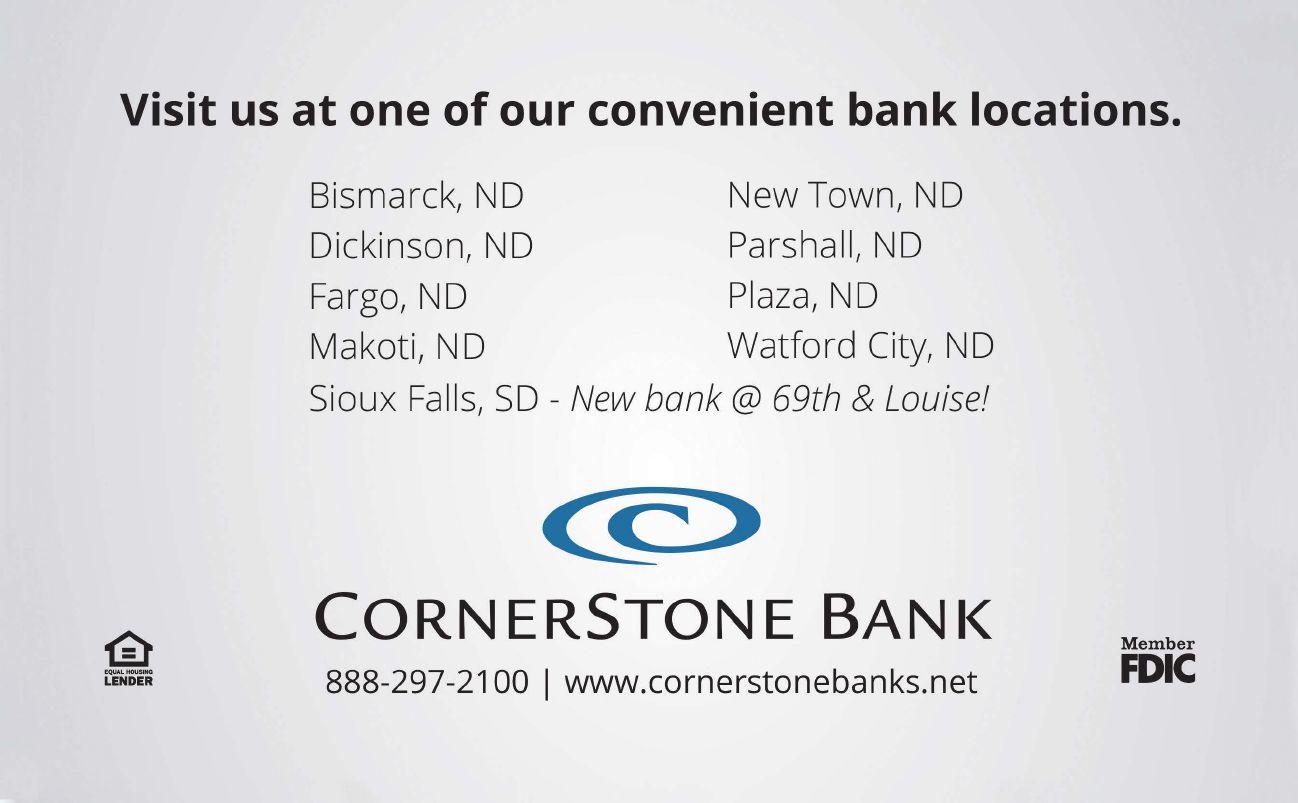


It’snotaboutwhat happened
thehesitations,the hopes,thewhat-ifsandwhat-nows.Allthatmattersiswhathappensnow. Allthatmattersisthismomentwheneverythingchanges.
